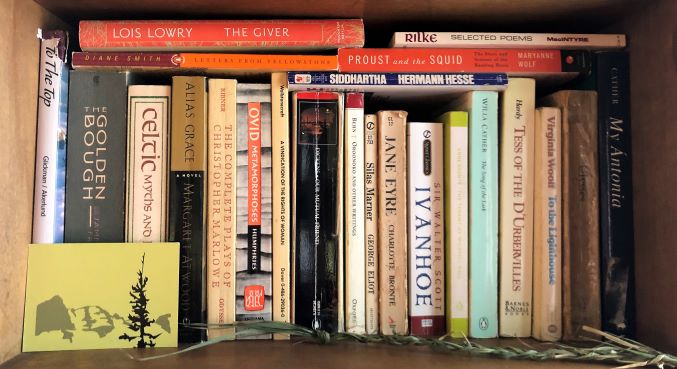A Town Like Alice
Nevil Shute’s novel, A Town Like Alice (originally published 1950), leads its readers through the years before, during, and after WWII on both the British home front and the colonial outposts of British Malaya. Eventually, readers wander as a far as Queensland, Australia in this classically mid-century novel about a resourceful (we might call her entrepreneurial in the 21st century) young woman (Jean Paget) whose grit and good sense make her a natural leader and a wonderfully likeable character. A Town Like Alice is her story, but it’s her story told second-hand from the perspective of her solicitor and friend/mentor, the seventy-something widower, Mr. Noel Strachan.
A third character becomes central to this story along the way; that of Australian ringer, Joe Harmon, whose path crosses Jean’s briefly while both are Japanese prisoners of war in Malaya during WWII. While their interaction is short-lived and ends in tragedy, their mutual affection creates ripple waves in both their lives. Jean and Joe’s romance is not overly flowery or verbose. Rather, it is punctuated by action; precisely the action one would expect from their seize-the-day personalities. Shute crafts a great romance in A Town Like Alice based on the premise that when we know, we know.
When reading A Town Like Alice there are moments when the reader is reminded that over 80 years have passed since its publication. That is probably most true in its characterization of the Aboriginal character (referred to disparagingly as Boongs). The novel certainly reflects what I imagine to be the treatment Aboriginal Australians realistically received in the mid-20th century (despite never having visited Australian and knowing limited details of its history); nonetheless, it was difficult to read at times, particularly because it does not seem to be drawing attention to the injustice of cultural prejudice or terms. I am eager to chat with this element of A Town Like Alice with folks from Australia and hear how it is viewed there today.
This was the first novel I read this year that was a previously owned but unread title on my shelves. It will not be the last. I hope to read twenty-five unread-but-owned books in 2025. A Town Like Alice also continued my Australian armchair travels (after The Naturalist’s Daughter reviewed earlier this month). I thoroughly enjoyed being transported, once again, to the wild down under. My desire to visit the country continent continues to grow.
Bibliography:
Shute, Nevil. A Town Like Alice. Macmillan collectors Library: 2018.
A Few Great Passages:
“'Well, you can take your time,' I said. 'You don't have to do anything in a hurry.'
She laughed at me. 'I believe that's your guiding rule in life - never do anything in a hurry’” (33).
“There was something in the attitude of people, even tiny children, to their illness that told when death was coming to them, a listlessness, as if they were too tired to make the effort to live. By that time they had all grown hardened to the fact of death. Grief and mourning had ceased to trouble them; death was a reality to be avoided and fought, but when it came - well, it was just one of those things” (81).
“I suppose it is because I have lived rather a restricted life myself that I have found so much enjoyment in remembering what I have learned in these last years about brave people and strange scenes. I have sat here day after day this winter, sleeping a good deal in my chair, hardly knowing if I was in London or the Gulf country, dreaming of the blazing sunshine, of poddy-dodging and black stockmen, of Cairns and of Green Island. Of a girl that I met forty years too late, and of her life in that small town that I shall never see again, that holds so much of my affection” (390).






